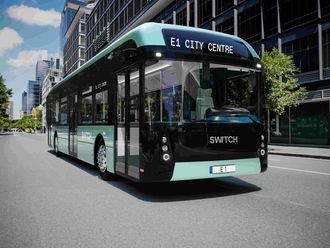Hyderabad: The cavernous store is painstakingly familiar, from the diminutive blue-vested woman greeting shoppers to the pictures of the company’s founder outside the administrative offices.
Wal-Mart has kept many things the same as it spreads into India, one of the last major global frontiers for the behemoth Bentonville, Arkansas, company. But its customers are themselves owners of businesses, including the mom-and-pop traditional groceries that sell most of India’s food.
Two years after scrapping plans to open retail outlets across the world’s second-biggest consumer market, Wal-Mart is recommitting to India as a wholesaler. In August, Wal-Mart will open its first new Best Price Modern Wholesale store in India since 2012 as part of a plan to expand from 20 stores to 70 within five years, company executives say.
Needing to boost revenue overseas to offset flagging U.S. growth, Wal-Mart is one of the few international retail chains to brave the challenges of operating in India, a tantalising market with 1.2 billion consumers but onerous limitations on foreign investment.
Even as it liberalised its economy in the last three decades, India has kept tight control over its food and grocery sector, which accounts for more than one-third of consumer spending. Foreign companies are barred from opening supermarkets, shielding domestic companies and small businesses from competition, and can own at most a 51 per cent stake in local chains.
But with no restrictions on foreign ownership of wholesale stores, Wal-Mart, which has long fought the charge that its superstores harm small businesses in America, has fashioned itself as a partner to India’s traditional mom-and-pop grocers. The ubiquitous neighbourhood shops known as kiranas sell 98 per cent of the country’s groceries, according to Euromonitor International, a consulting group.
At the massive Best Price in the southern city of Hyderabad, a display called ‘My Kirana’ wedged between the fruit section and the checkout lanes features seasonal products and brightly colored shelves to give sellers ideas on how to spruce up their inventory.
Wal-Mart India also plans to expand its e-commerce platform and has sent employees to customers’ kiranas to suggest ways to update shops that might now seem dingy and haphazardly organised.
“We’re using expertise from the world’s largest retailer to help kirana store owners run their businesses in a safe and efficient manner,” said Rajneesh Kumar, Wal-Mart India’s vice-president for corporate affairs.
Executives did not disclose precise figures but said that kirana owners made up more than half their customers in India. Others include catering businesses, offices, hotels and restaurants.
“Wal-Mart is making the most out of what’s available and ensuring it does build up a workable, scalable business model in India,” said Devangshu Dutta, chief executive of Third Eyesight, a management consulting company. “As and when the regulations change, they could step into a direct retail operation.”
Many in the ruling Bharatiya Janata Party are opposed to relaxing the foreign investment rules. Analysts also say that other restrictions — including a requirement that retailers source at least 30 per cent of their goods from small and midsize Indian producers — make it impossible for foreign supermarkets to open.
Protected by these policies, the traditional kirana remains an often charming, sometimes frustrating relic of the decades before India shed the shackles of a socialist-oriented economy.
Better stocked than gas-station convenience stores in Southern California and better priced than Manhattan bodegas, the largely family-owned shops have built loyalty over decades by offering free credit, forgiving customers who don’t have exact change and delivering even the smallest orders within minutes.
Entering one of the country’s estimated 12.5 million kiranas can be a daily exercise in nostalgia for an Indian, to gaze upon many of the same products and brands he grew up with. Even many urban kiranas resist modern conveniences like credit cards and lack proper storage facilities, resulting in large amounts of spoiled food in a country where legions go hungry.
Foreign retailers have long seen a potential gold mine in modernising India’s grocery industry. In 2007, amid global excitement about India’s economic prospects, Wal-Mart announced plans to open hundreds of retail stores in partnership with the Indian conglomerate Bharti Enterprises.
But the marriage dissolved in 2013 amid continuing questions about Indian investment restrictions and an internal investigation of allegations that Wal-Mart India employees had broken US anti-bribery laws.
Wal-Mart India suspended its chief financial officer and other executives, and last year brought in a new chief executive, Krish Iyer, as it shifted its focus to the country’s $300-billion (Dh1.10 trillion) wholesale industry, which has already become crowded with domestic players.
On a recent afternoon, Bhaskar Sreenivasan and his father roamed the aisles of the Best Price in Hyderabad, looking for mops and brooms to sell at their kirana about two miles away.
Before the Best Price opened in 2012, the family relied on a loose network of wholesalers who kept irregular hours. If an item suddenly ran out, it could be days before the vendor returned, making it difficult for the Sreenivasans to keep popular items in stock.
“We used to go to 10 or 12 places to get all the inventory we needed, and we would spend the whole day,” Bhaskar Sreenivasan said. “Now it’s better. We come here once or twice a week and in a couple of hours we have everything we need.”
Much about urban India’s culture and geography favors the corner grocer. Most Indians prefer fresh fruits and vegetables in part because packaged goods didn’t become common until economic liberalization in the 1990s. In densely packed cities and towns, kitchens usually are small, so people tend to shop every day or two rather than store large quantities at home.
Experts say Wal-Mart can reap major profit by showing kiranas how to become more efficient.
“When these modern wholesale companies start handling their back office, kiranas don’t have to stock up for so long,” said Harminder Sahni, founder of Wazir Advisors, a corporate strategy consulting firm. “So the same-size store can feature many more items, which is going to mean a much better experience for the consumer.”
— Los Angeles Times












